Tracking Down Case Files and Permits
Are you interested in knowing what’s going on in your neighborhood or across town? Or you saw a demolition permit posted on a near-by house or building, and you want to know more. City Hall can be a mysterious place to most people because each department has their own way of doing business, and they all employ department-centric jargon. On-line services have revolutionized one’s ability to access data, but you still need to know who does what or you end up running in circles.
Before I continue, please don’t assume I’m an expert on city matters just because I’m writing this article. Far from it. Dealing with the city, any city, is a lifelong learning experience of trial and error. Just when you figure something out, departments may change, regulations may change, processes may change. The best way to keep up to date is to network with others and share what you’ve learned.
Here in the City of Los Angeles, there are two major departments that are primarily responsible for reviewing and approving building permits: the Los Angeles Department of City Planning (LADCP) and the Los Angeles Department of Building and Safety (LADBS). When a developer wants to construct a new building, they will file their permit application and building plans with the LADCP. The LADCP will conduct a plan check to determine the type of permits required.
For the developer, the easiest permit to obtain is known as a ministerial permit. This type of permit does not require the LADCP to take discretionary action in approving the application. If the project falls within the allowable limits of the law, all LADCP needs to do is certify that the application is complete, and the fees have been paid.
Once the application is approved by the LADCP, the applicant may proceed in obtaining permits from LADBS. Some projects, depending on size, type, and scope, can bypass planning and go directly to LADBS. Recent executive directives by Mayor Bass direct the LADCP to revise zoning codes and policies so that more residential projects qualify for ministerial permits.
If the LADBS decides that the project may require their discretionary approval, they will prepare an Initial Study. The outcome of the study might be the issuance of a Negative Declaration, or it might be that the applicant must prepare an Environmental Impact Report, or similar report to assess impact. There will be several public hearings and meetings up to, and including, final approval by City Council. Once approved, the LADBS will manage the issuance of permits.
Enough talk let’s find some data. The LADCP maintains a website where you can find case reports for both recently filed permit applications and completed applications. When a case file is created, a unique case file number is assigned. Here’s the link to the LADCP Case Reports webpage. Please don’t click the link yet, screen grabs are presented in the text below.
When you click the link, don’t be confused if the page you see suddenly disappears and is replaced by a map (just scroll up). This confused me too, until I realized the page is just jumping down to show you the map.
Case reports can be obtained in several different ways via look-up listings and maps. Here’s a highlight of what’s available as of March 2024:
Recent Case Filings - A listing of all planning cases filed with the LADCP in the last two weeks up to today.
Bi-Weekly Case Filings - An archive of bi-weekly reports going back to the year 2016 for reports sorted by Council District or Community Plan Area, and back to 2003 for reports sorted by Certified Neighborhood District.
Weekly Completed Cases - An archive of weekly completed case reports going back to 2020 with entries organized by the Council District, Certified Neighborhood District, or Community Planning Area.
AB 2097 Case Filings - Projects under AB 2097 are not required to comply with minimum parking requirements. Listed cases are for the last two weeks.
Prefix & Suffix Report - What all the acronyms mean that make up the planning case number. A case number consists of four or more parts including prefix (the city entity in charge of the case, the year the application was filed, a unique identification number, and one or more suffixes denoting the type of case.
I’ll comeback to the Recent Case Filings page, but for now, scroll down and look at the map. The map is useful if you want to know what’s going on in a specific part of town and you don’t need the most recent data (i.e.., within the last two weeks). You can also find information about cases completed over the last 18 months by clicking the gray tab to the right of the case filings tab.
The data points represent the case filings for the eight most recent bi-weekly reports. A downside of this format is that you must click each datapoint to learn about each case. The tags are color-coded by date, not by project type.
Scrolling up from the map, click the link to LADCP Recent Case Fillings. This page provides date of filing, case number, address, and a link to details for each case. No case information other than case number and address is provided. Clicking on “Detail” will take you to the specific case report. This isn’t much better than the map, but there’s a way to find more data.
Click on the “Export Data to Excel” link and download the file. When you open the file, you may need to enable editing depending on your security settings. The excel file provides filing date, case number, council district, city planning area, and project description. The project description may be very detailed or very brief. Demolition of an existing SFD (single family building) or commercial building may not be mentioned in the description.
The case numbers presented in the excel worksheet are hyperlinks that will take you to the LADCP Case Summary and Documents page. This page provides information such as: case filing and assignment dates, the planning staff member assigned to the case, appeal status, applicant, representative, and links to approved documents and initial project submittals. The links to approved documents, if any, will appear when the page opens. Click the tab (action1) to check for initial documents. Since the case below was recently filed, you will not find any approved documents.
For cases well along in the review process, you should find listed under approved documents a Letter of Determination or LOD. The LOD will specify the findings of the planning department and the subsequent actions, if any, the applicant must take to procure project approval. Before leaving this page, be sure to check for related cases (action 2). Some projects are assigned multiple case numbers, and you might find initial or approved documents posted under the related case number.
If you want to track the case as it moves through the system, contact the assigned planner, and ask to be placed on the mailing list (either paper copy or email). Provide both the case number and street address. Once placed on the list, you will receive all notice of hearings and the LOD, when issued. Hearing notices will tell you how you can obtain a copy of relevant documents and how you can participate and provide public comment. Refer to the “LADCP Staff Directory” for contact information (note: assigned planners are listed in the directory by geographic area).
Once you are sure you have obtained all useful planning information about the project from the LADCP website, click the project address and you will be taken to the ZIMAS website (action 3). ZIMAS stands for Zoning Information Map Access System, a GIS mapping system that provides extensive information about buildings and property in Los Angeles.
Since we are linking to ZIMAS from the LADCP page for a specific address, ZIMAS will open with the tract highlighted in blue. You can also go to the ZIMAS website and enter the address manually. Notice that a building exists within the outlined area. Depending on the scope of the project, it’s a fair assumption that the project may include demolition of the structure.
The left side of the page provides extensive pull-down menus regarding building and zoning information. Here you can find physical details about the on-site buildings, the year they were built, maps (with links to the Los Angeles County Assessor maps and the Los Angeles Bureau of Engineering maps), and much more.
Click on “Planning and Zoning,” and look for “Historic Preservation Review.” If the entry is “Yes,” click the link and a popup box will show more information as to the historic status of the building. If the entry is “No,” there still may be enough basis for the building to be significant. A link is provided to the “Historic Places LA” website. The Historic Places LA website is a new system designed to create an inventory and map of significant historic resources. Data entry is ongoing.
Since we want to know about a proposed project, open the section “Permitting and Zoning Compliance” and click “View” for building permit info. Clicking “View” will take you to the “LADBS Permit and Inspection Report.” If you see more than one address listed, be sure to check each for permit activity. Commercial buildings often have more than one address, as do residential duplexes, bungalow courts, multi-family housing, and homes with an accessory dwelling unit.
Click on an address and expand the section for permit information. There is also a section for code enforcement. You should see a table listing the application/permit number, the project control/job number, type of work, status, and work description. Permit status will change over time as the work proceeds towards completion.
In the permit and inspection report above, the house was remodeled in 2012. A new 200-amp electrical service was installed followed by remodeling of the interior and kitchen. Then, in October 2023, permits were filed to demolish the house. The application was filed on October 24th and corrections were issued on October 26th. Before issuing a demolition permit, the LADBS must complete a Demolition Permit Inspection (DPI) and the applicant must post notice. An actual demolition permit can not be issued until the DPI and Posting is final.
To obtain more information, click on the permit number to open the LADBS Permit Detail Report. The detail report provides information as to status history and clearance information. For a major project, or one involving a historic building, there may be a dozen or more city departments that must clear the permit prior to final approval. There isn’t much to show in this report because the application is still waiting for the applicant to respond to comments.
It is interesting to note that the demolition permit was filed four months prior to the filing of building plans with the LADCP. A potential holdup with demolition might be LADBS waiting for LADCP to rule on the proposed replacement project. I say “might be” because the current law is unclear to me. Issues such as building ownership, occupancy, and proposed redevelopment all come into play. If you are familiar with this issue, please comment and I’ll make it a future topic.
I hope you found this brief tutorial of interest and use. I’ve barely scratched the surface as to the type of records you can find online. This post has focused on finding active planning department case files and building department permit reports. If you’re more interested in historical building permits, or you have an interest in maps documenting how the city developed over time, please post a comment and I’ll see what I can find buried in the dusty archive.
UPDATES
12 Aug 2024 - Be aware that searching for building permits by address on the LADBS website may not get you to all of the site permits. A given parcel may have multiple addresses. In the example below, the project at 1400 N Soto Street in Boyle Heights spans 1400 thru 1426 N Soto Street. You need to enter the address range to find all of the applicable permits. Well, that's what I use to think until I came across the example presented below.
Notice the 4th line entry. The LADBS has created an address of 1410 1-4 to represent the four new buildings being erected. If you enter this address into the search form, you will receive the message that no such permits exist. How would you even know that the LADBS has filed the permits under some new address that does not conform to their search page? Only by accessing the building permits via ZIMAS will you get to all of the permits for the parcel.


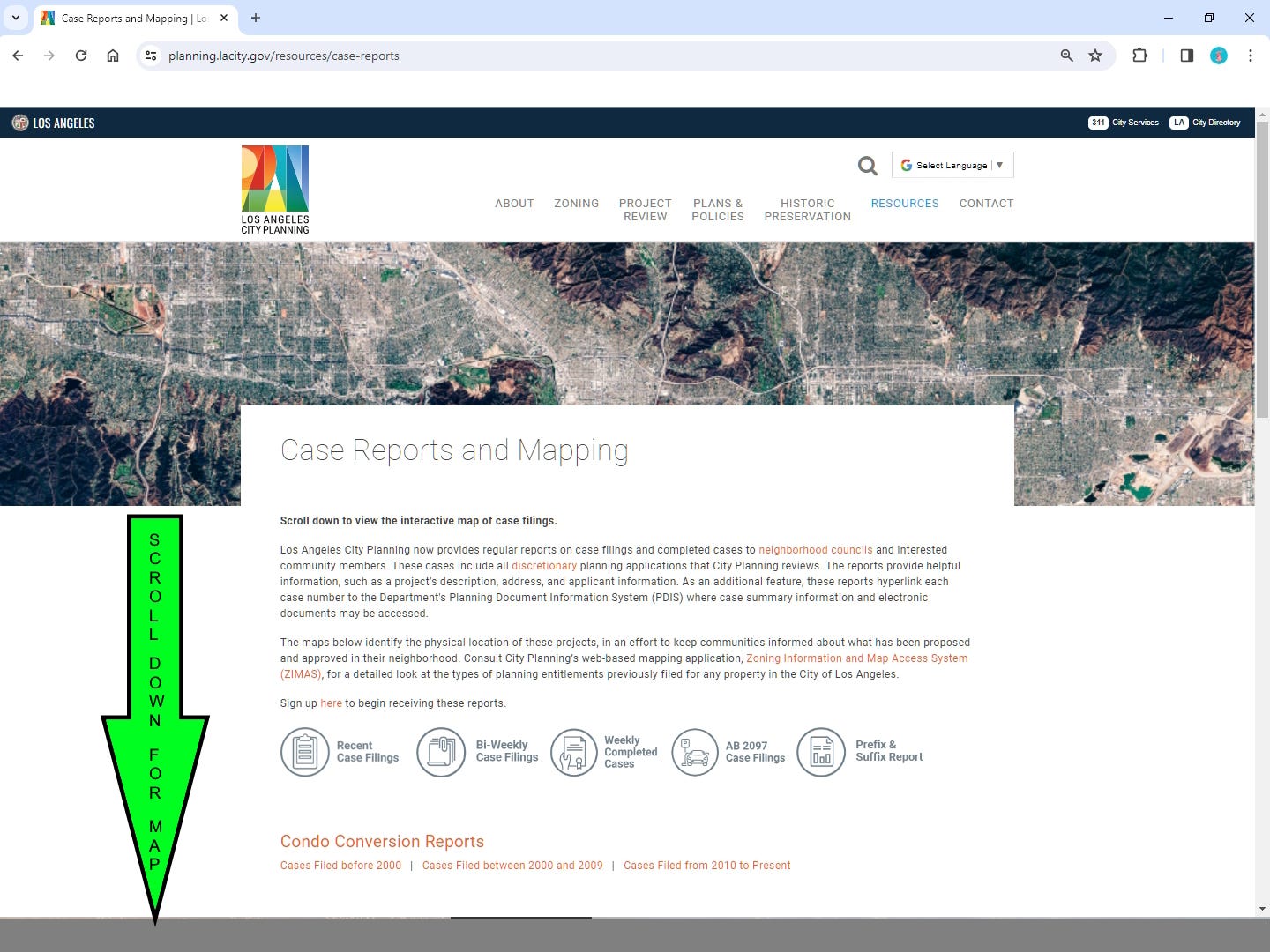
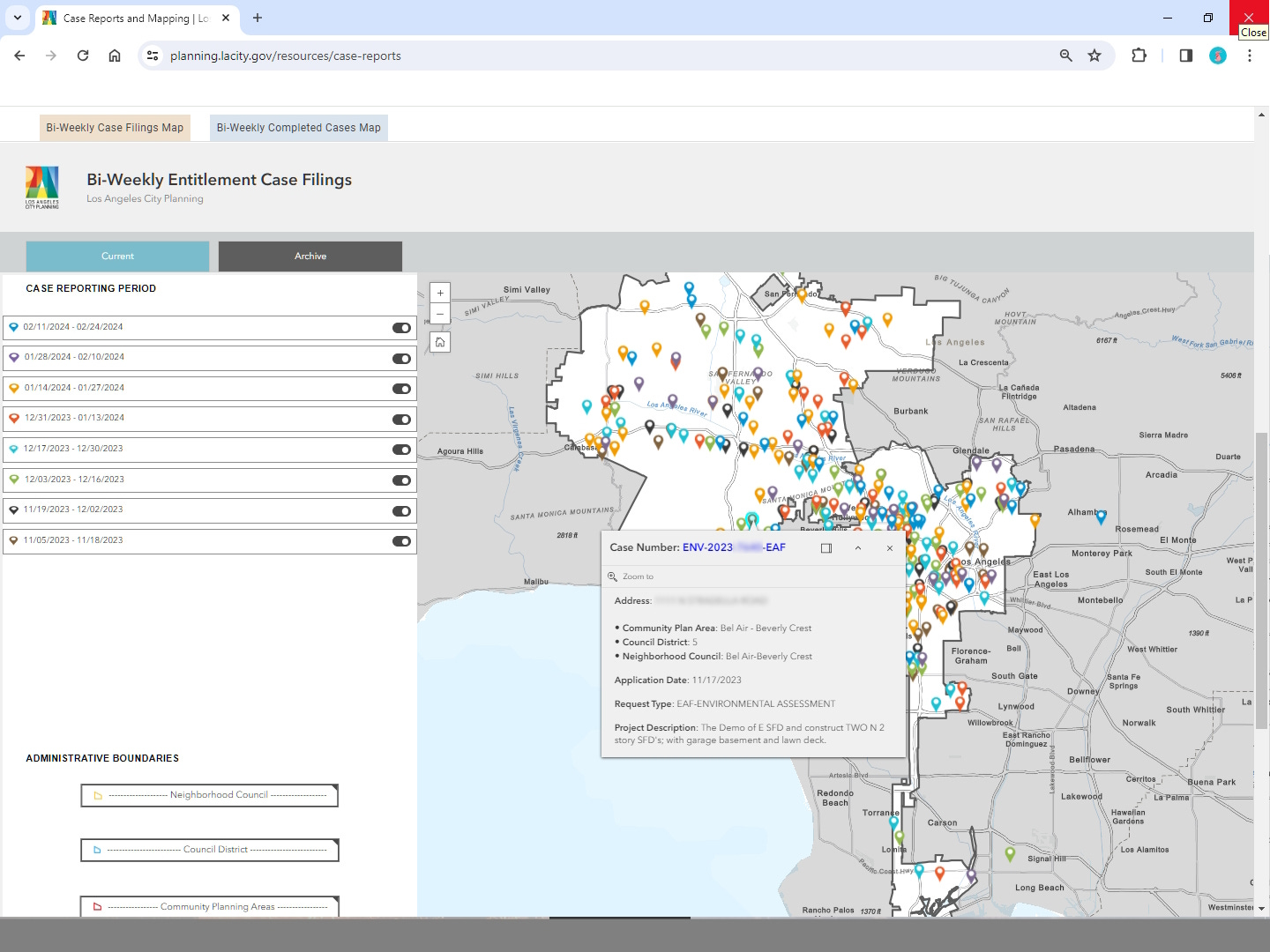
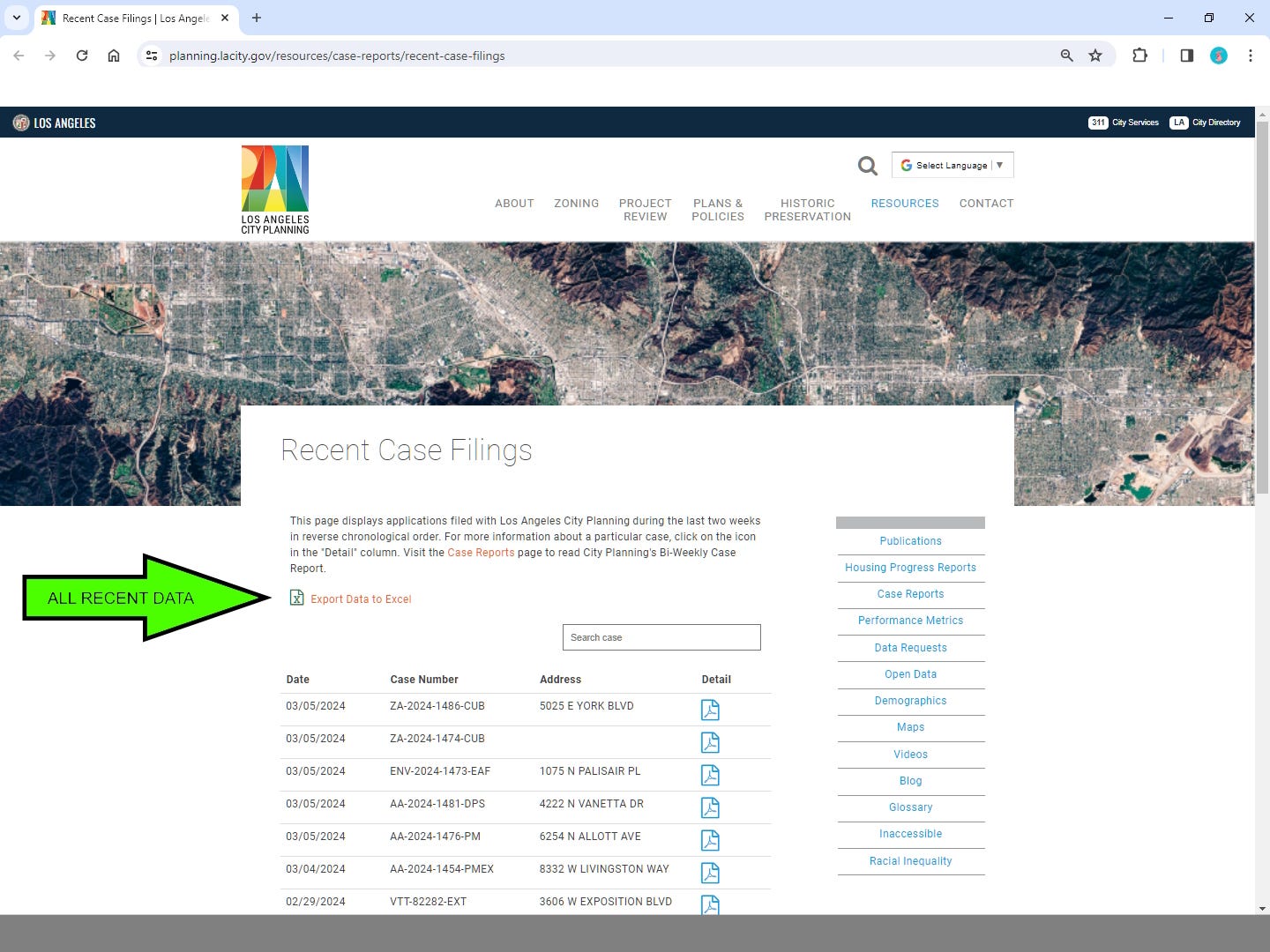
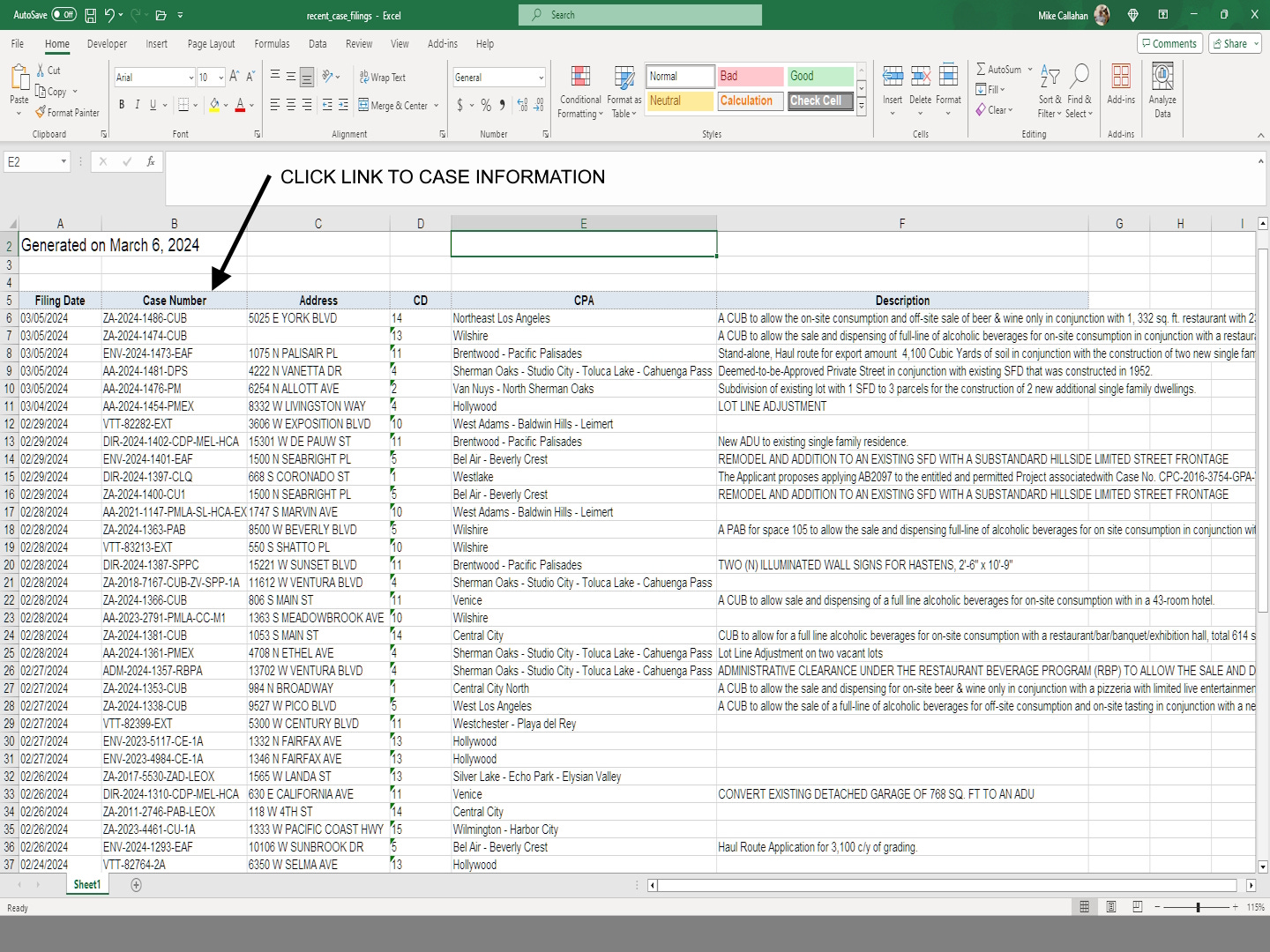
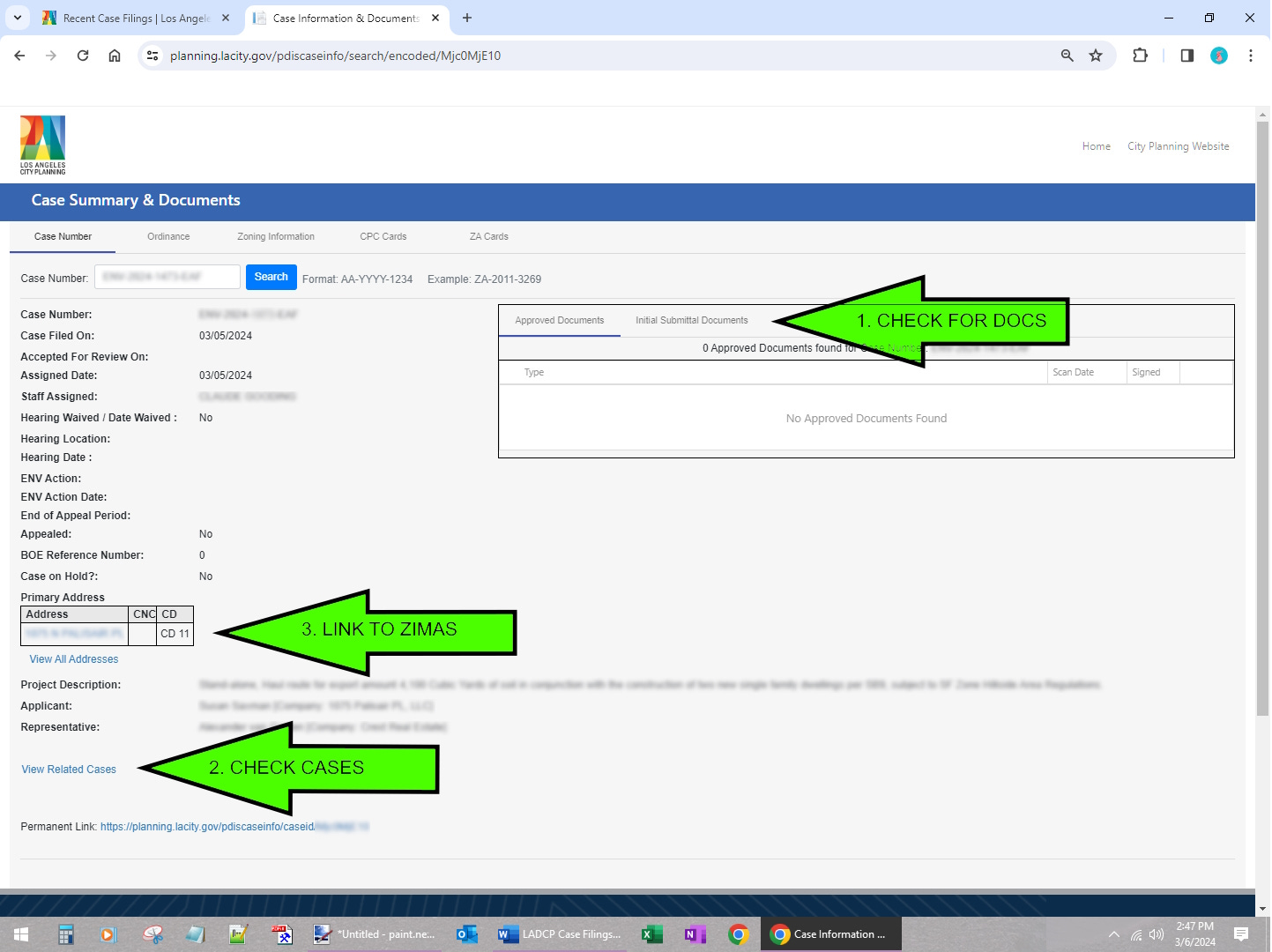
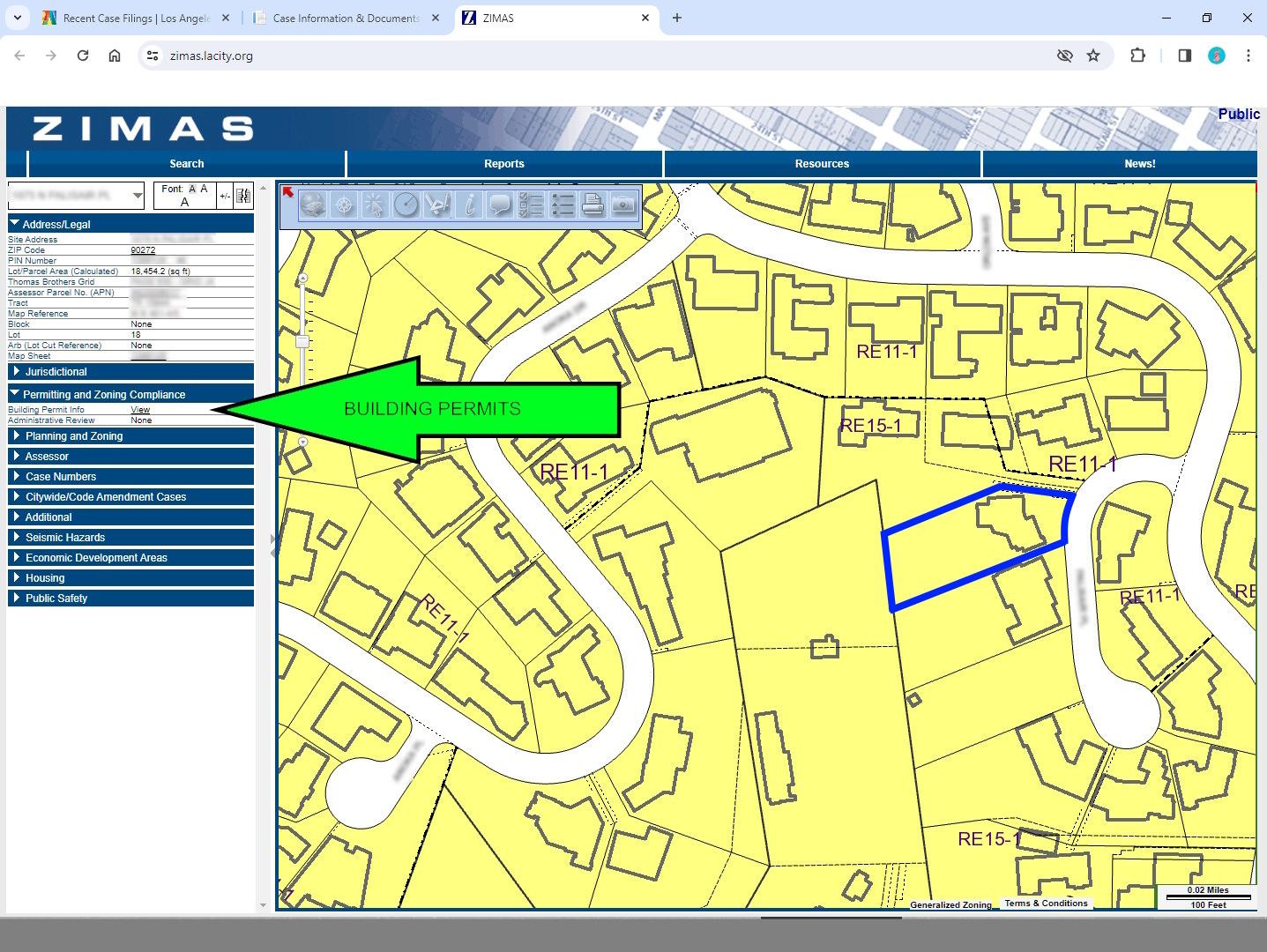

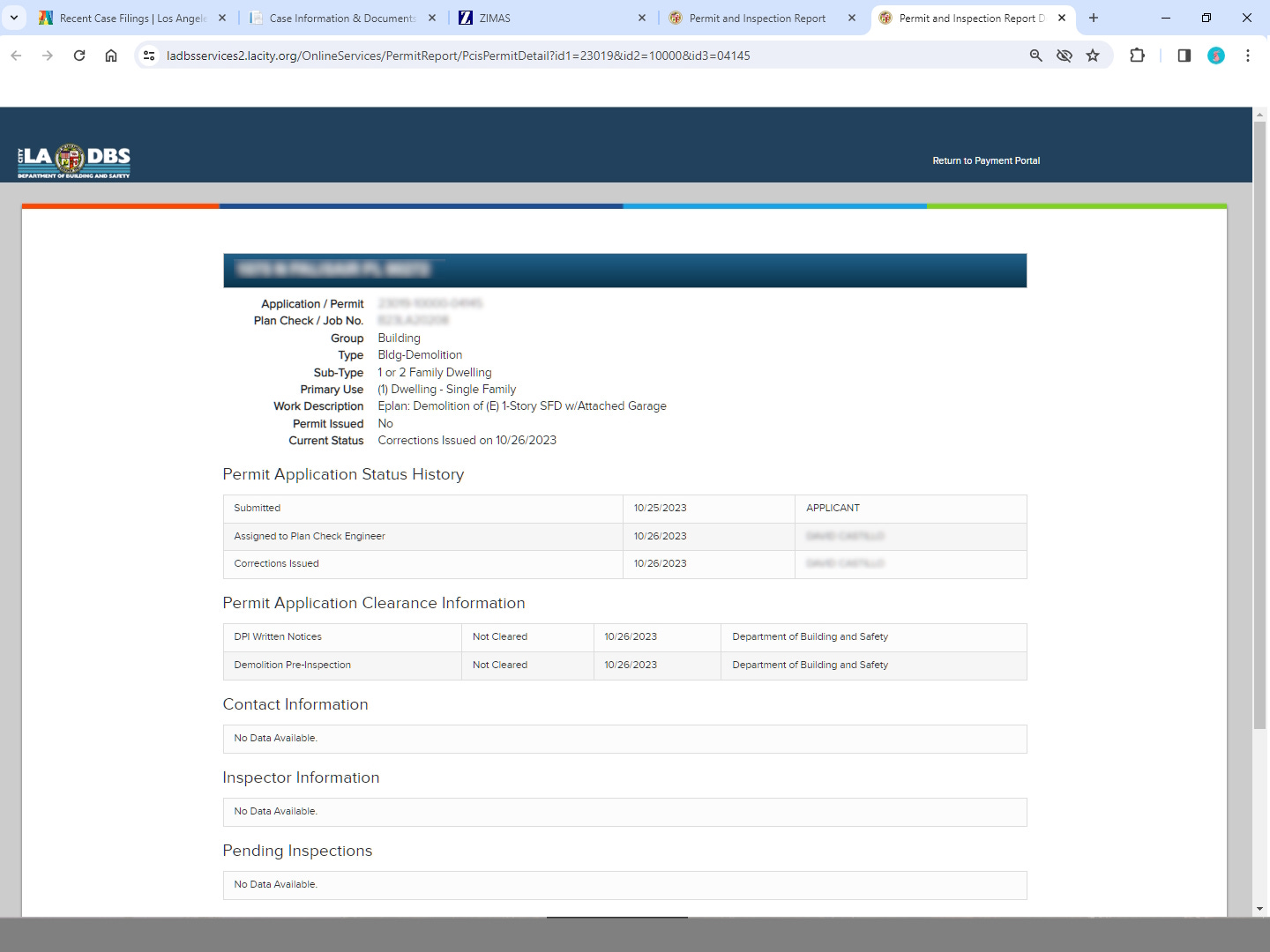
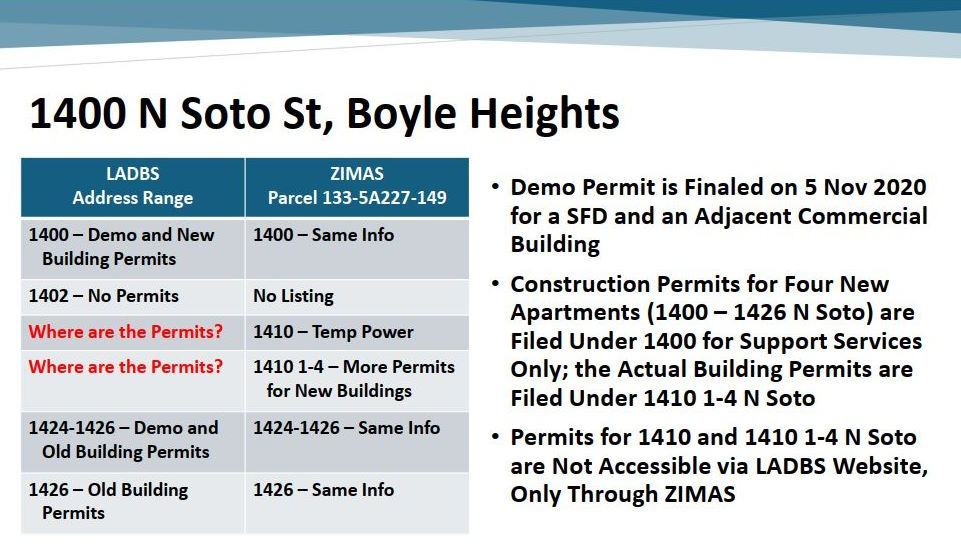
Thanks for the cool tips, Mike! They don't make it easy, do they...?